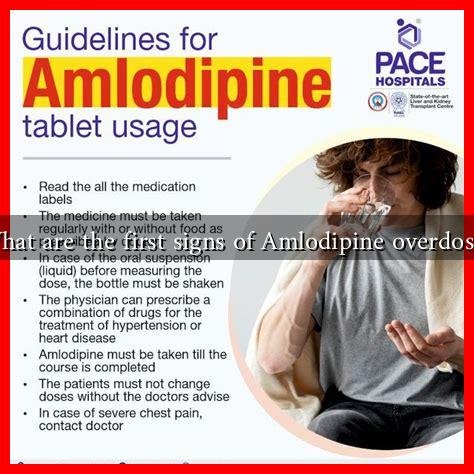-
Table of Contents
What are the First Signs of Amlodipine Overdose?
Amlodipine is a widely prescribed medication primarily used to treat high blood pressure and angina. As with any medication, there is a risk of overdose, which can lead to serious health complications. Understanding the first signs of an amlodipine overdose is crucial for timely intervention and treatment. This article explores the symptoms, potential consequences, and necessary actions to take in the event of an overdose.
Understanding Amlodipine
Amlodipine belongs to a class of drugs known as calcium channel blockers. It works by relaxing the blood vessels, allowing blood to flow more easily, which helps lower blood pressure. While effective for many patients, the risk of overdose exists, particularly if the medication is taken in excess or combined with other substances.
Signs and Symptoms of Amlodipine Overdose
Recognizing the early signs of an amlodipine overdose can be lifesaving. The symptoms may vary based on the amount ingested and the individual’s health condition. Common early signs include:
- Hypotension: A significant drop in blood pressure can occur, leading to dizziness or fainting.
- Bradycardia: A slower than normal heart rate may develop, which can be dangerous.
- Peripheral Edema: Swelling in the legs and ankles may be observed due to fluid retention.
- Fatigue: Unusual tiredness or weakness can be a sign of overdose.
- Nausea and Vomiting: Gastrointestinal distress is common in cases of overdose.
Severe Symptoms and Complications
If an overdose is not addressed promptly, more severe symptoms may manifest, including:
- Severe Hypotension: This can lead to shock, a life-threatening condition.
- Cardiac Arrest: In extreme cases, the heart may stop beating altogether.
- Respiratory Distress: Difficulty breathing may occur due to fluid accumulation in the lungs.
- Altered Mental Status: Confusion, lethargy, or loss of consciousness can indicate severe toxicity.
Case Studies and Statistics
While specific statistics on amlodipine overdose are limited, case studies provide insight into the potential dangers. For instance, a report published in the National Institutes of Health highlighted a case where a patient ingested 100 mg of amlodipine, resulting in severe hypotension and bradycardia. The patient required immediate medical intervention, including intravenous fluids and medications to stabilize blood pressure.
Another study indicated that overdoses of calcium channel blockers, including amlodipine, are associated with a higher risk of hospitalization and complications compared to other medications. This underscores the importance of adhering to prescribed dosages and being aware of the signs of overdose.
What to Do in Case of Overdose
If you suspect an amlodipine overdose, it is crucial to seek medical attention immediately. Here are steps to take:
- Call Emergency Services: If symptoms are severe, dial emergency services right away.
- Provide Information: Inform medical personnel about the amount of amlodipine taken and any other medications involved.
- Do Not Induce Vomiting: Unless instructed by a medical professional, do not attempt to induce vomiting.
Conclusion
Amlodipine is an effective medication for managing high blood pressure and angina, but awareness of the signs of overdose is essential for patient safety. Early recognition of symptoms such as hypotension, bradycardia, and gastrointestinal distress can lead to timely medical intervention, potentially preventing severe complications. Always adhere to prescribed dosages and consult healthcare providers with any concerns regarding medication use. By staying informed, patients can better protect themselves from the risks associated with amlodipine overdose.

